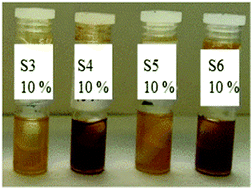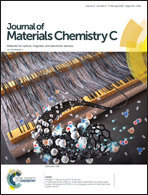Solution-processable, niobium-doped titanium oxide nanorods for application in low-voltage, large-area electronic devices
Abstract
We report for the first time the one-step synthesis of solution-processable, highly crystalline, niobium-doped titanium dioxide (Nb-TiO2) nanorods in the anatase phase by the hydrolytic condensation of Ti(OiPr)4 and niobium(V) ethoxide using oleic acid as a structure-directing and stabilising agent. These novel surface-stabilised nanorods can be easily dispersed in common solvents at relatively high concentration (∼10%) and deposited as uniform, thin and transparent films on planar substrates for the fabrication of electronic devices. The small size of the nanoparticles synthesized represents an important advance in achieving high-k dielectric thin films smooth enough to be suitable for OFET applications and the plastic electronics filed in general. Preliminary investigations show that the dielectric constant, k, of niobium-doped (7.1 wt%) titanium dioxide (Nb-TiO2) nanorods at frequencies in the region of 100 kHz–1 MHz, are more a third greater (k > 8) than that (k = 6) determined for the corresponding undoped titanium dioxide (TiO2) nanorods. The current–voltage (J–V) behaviour of these devices reveal that niobium-doping improves, by reducing, the leakage current of these devices, thereby preventing hard dielectric breakdown of devices incorporating these new nanorods.



 Please wait while we load your content...
Please wait while we load your content...